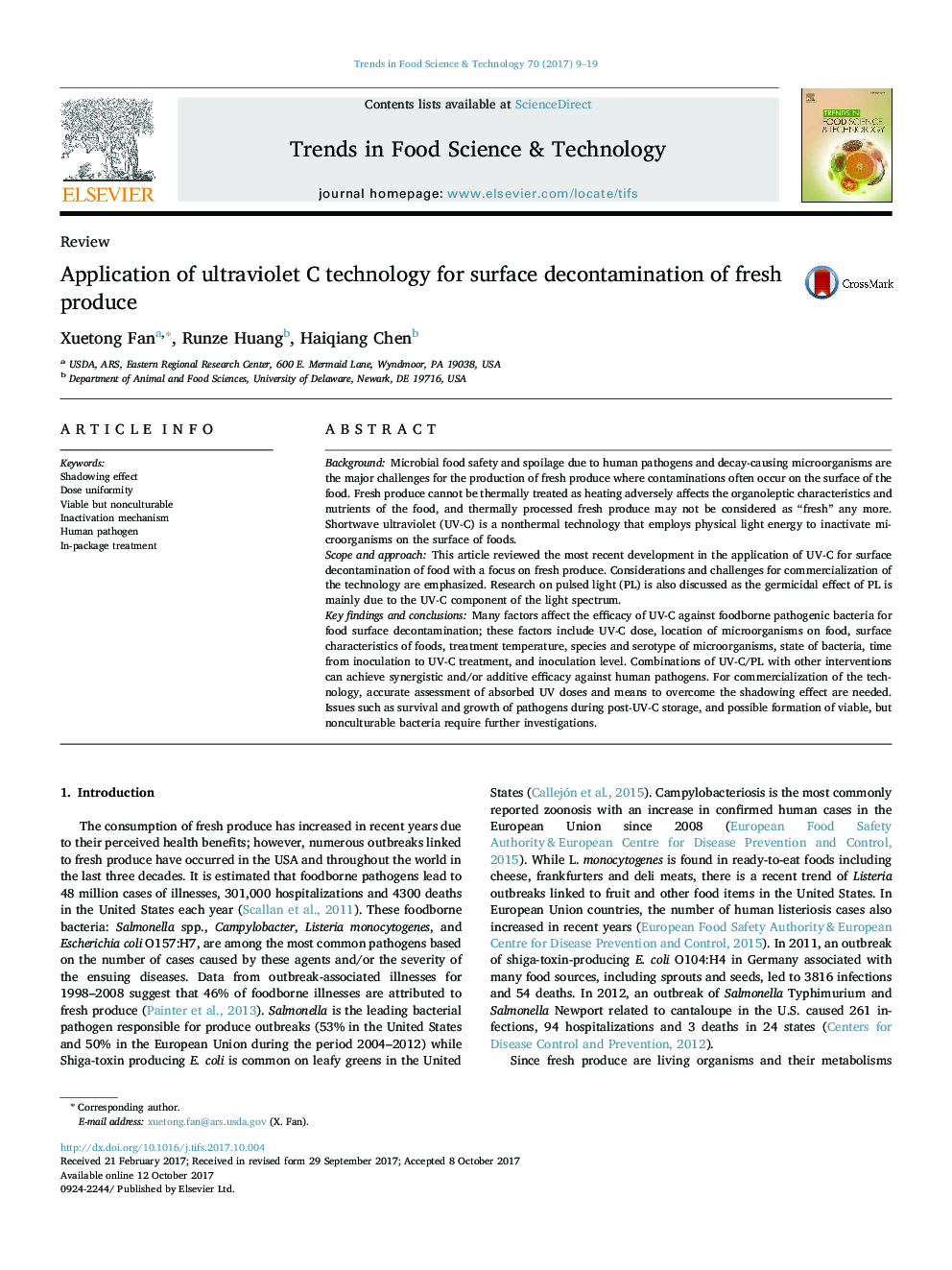| کد مقاله | کد نشریه | سال انتشار | مقاله انگلیسی | نسخه تمام متن |
|---|---|---|---|---|
| 5523585 | 1546109 | 2017 | 11 صفحه PDF | دانلود رایگان |

- Many factors affect the efficacy of UV-C against foodborne pathogens on foods.
- Achieving dose uniformity of UV-C is critical for commercial applications.
- UV-C combined with other treatments may achieve additive or synergistic effects.
- The survival and regrowth of bacteria and possible VBNC state require study.
BackgroundMicrobial food safety and spoilage due to human pathogens and decay-causing microorganisms are the major challenges for the production of fresh produce where contaminations often occur on the surface of the food. Fresh produce cannot be thermally treated as heating adversely affects the organoleptic characteristics and nutrients of the food, and thermally processed fresh produce may not be considered as “fresh” any more. Shortwave ultraviolet (UV-C) is a nonthermal technology that employs physical light energy to inactivate microorganisms on the surface of foods.Scope and approachThis article reviewed the most recent development in the application of UV-C for surface decontamination of food with a focus on fresh produce. Considerations and challenges for commercialization of the technology are emphasized. Research on pulsed light (PL) is also discussed as the germicidal effect of PL is mainly due to the UV-C component of the light spectrum.Key findings and conclusionsMany factors affect the efficacy of UV-C against foodborne pathogenic bacteria for food surface decontamination; these factors include UV-C dose, location of microorganisms on food, surface characteristics of foods, treatment temperature, species and serotype of microorganisms, state of bacteria, time from inoculation to UV-C treatment, and inoculation level. Combinations of UV-C/PL with other interventions can achieve synergistic and/or additive efficacy against human pathogens. For commercialization of the technology, accurate assessment of absorbed UV doses and means to overcome the shadowing effect are needed. Issues such as survival and growth of pathogens during post-UV-C storage, and possible formation of viable, but nonculturable bacteria require further investigations.
Journal: Trends in Food Science & Technology - Volume 70, December 2017, Pages 9-19